- 15shares
- 15
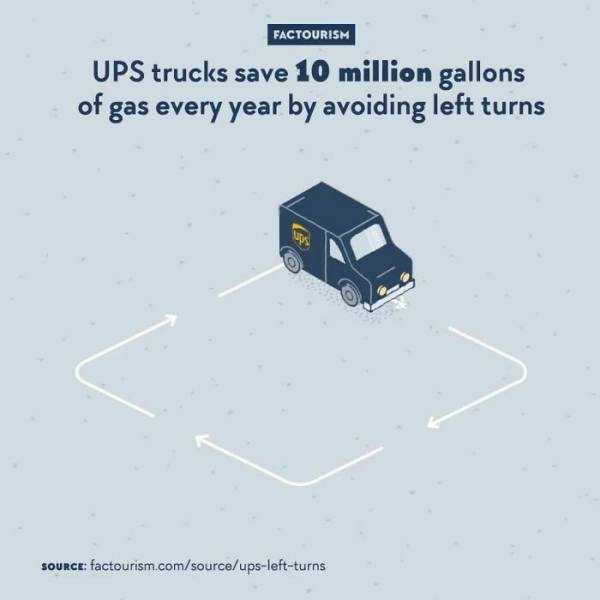
Turning left puts drivers against the flow of vehicles coming the other way, which leads them to wait 30–45 seconds each time with the engine running. A new routing system introduced a few years ago, which calculates routes favouring right turns, saves the whole UPS 10 million gallons (38 million litres) of fuel every year. On top of that, right turns are more safe, leading to only 1.2% of crashes instead of 22.2% for left turns.
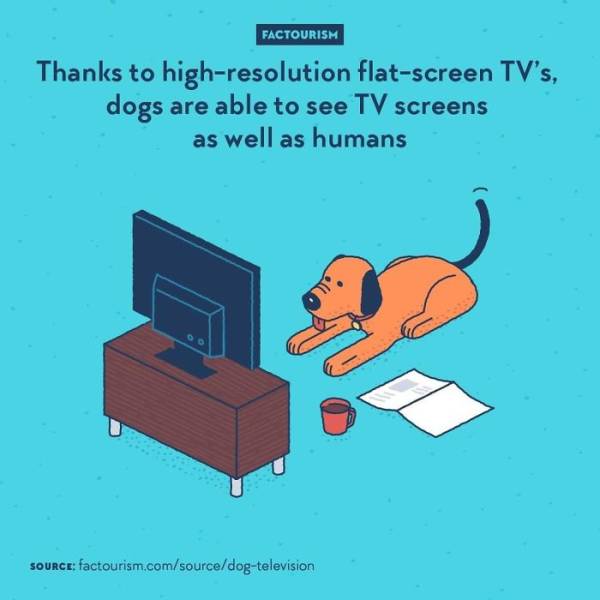
Thanks to modern television screens, dogs are able to watch TV as well as humansHuman eyes can register around 55 images a second, while dogs, better at detecting quick movements, can see around 75 images a second. Older television sets were flickering around 60 times a second, good for humans but not adapted to dogs. New television screens have higher frequencies, so dogs can finally appreciate what happens on TV.
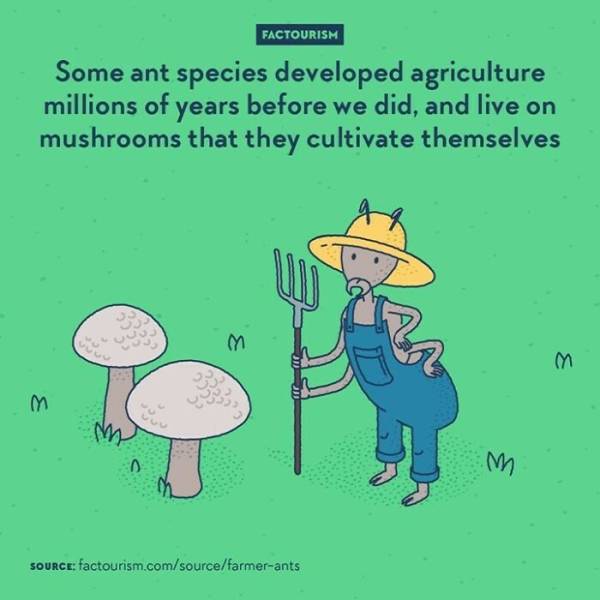
Several species of ants, attines, started farming 55 to 60 millions of years before humans did. Their favourite food? Fungus. They organise themselves around cutting grass and leaves, bringing them back to their colony, watching after fungus growing on the harvested crop, and then collecting and eating the fungus. The fungus species evolves along with each ant species.
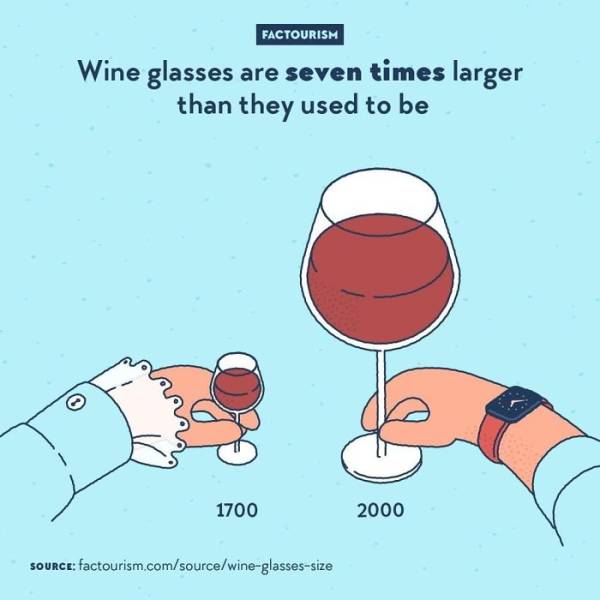
Wine glasses are seven times larger than they used to be{Weekend Repost}The average wine glass from the 1700s was about 66ml, against 417ml in the 2000s. That is a finding of research conducted by scientists from the university of Cambridge. Comparing 411 glasses from the past 300 years found in museums, catalogues, and other sources, they found that their size got six to seven times larger during that time. The larger increase has been happening in the last few decades, leading to the question of what it can mean in terms of alcohol consumption.
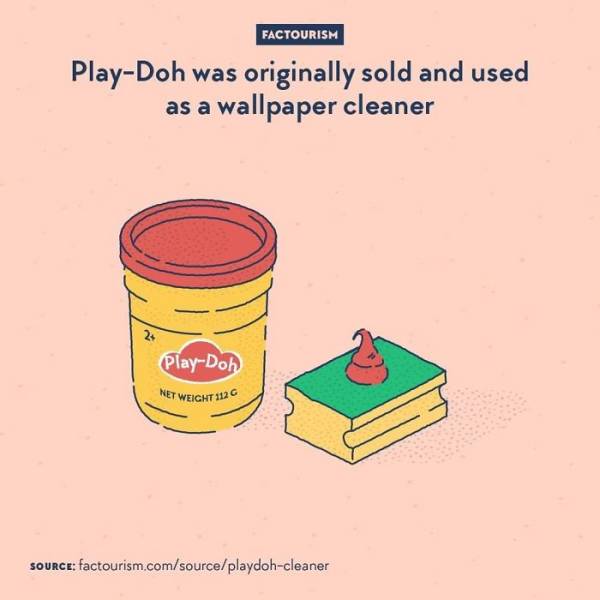
Play-Doh was originally sold and used as a wallpaper cleaner. The company making Play-Doh, then called Kutol, was mainly producing soap, until the supermarket chain Kroger ordered wallpaper cleaner, a common product at a time where households were heated with dirty coal, from them in the 30s. They started producing the clay-like cleaner, and it soon became their main product. However, the use of wall cleaner declined greatly by the time the 50s arrived. That’s when employee Kay Zufall came in: she had seen a magazine wallpaper cleaner used as a material for kids to model Christmas decorations. She suggested selling the dough as a creative toy for kids. They removed the detergent in it, added colouring and an almond smell, and finally marketed it as Play-Doh.
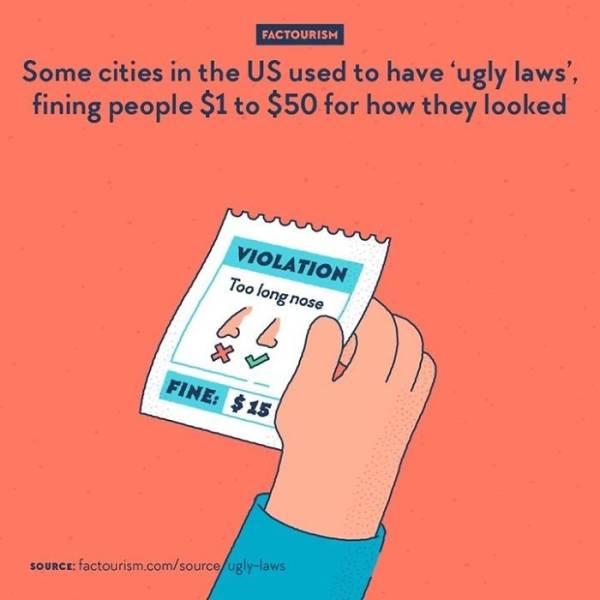
Some cities in the US used to have ‘ugly laws’, fining people $1 to $50 for how they lookedAnd by ugly, mayors mostly meant poor or with a disability. The laws were a pretext to force beggars, people with missing limbs or visible diseases, to stay away from public space. From the 19th century, several cities of the West and Midwest had laws like this. The last one, in Chicago, was only repealed in 1974.
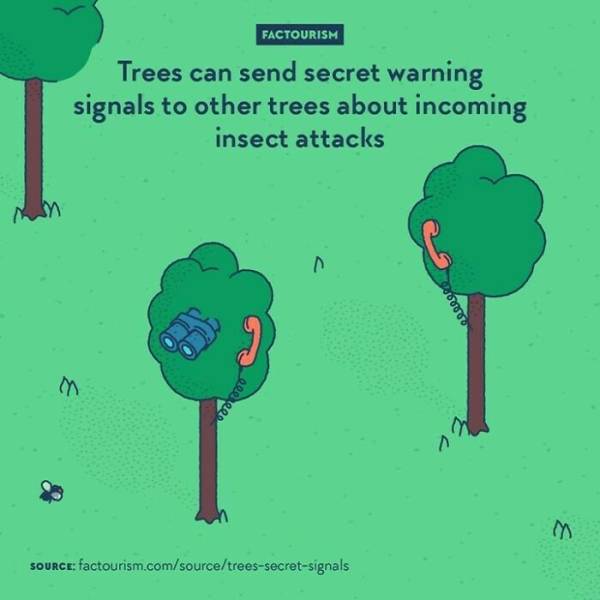
Plants can communicate with one another. Some correspond with each other by emitting volatile organic chemicals, some even send electric signals. The meaning of the messages can have different goals, such as alerting about insects, advising nice directions for growing, regulating temperature, etc.
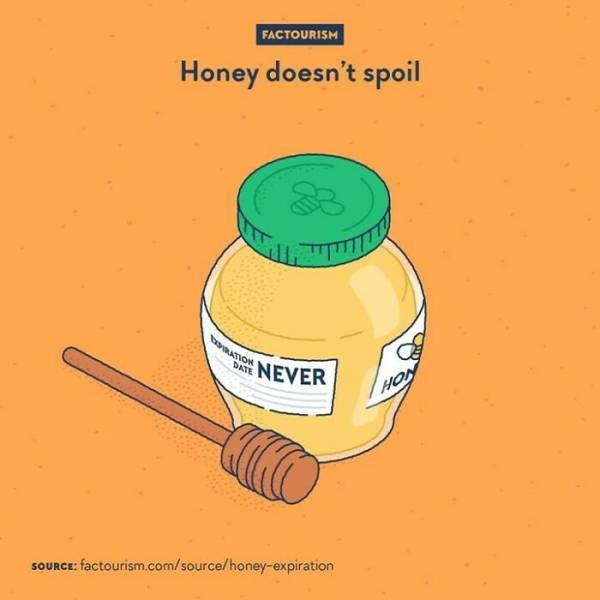
The visibly never ending shelf-life of honey is surprising: archaeologists have excavated honey from thousands of years ago, and it’s still unspoiled. One reason is that as a substance, honey has very low moisture, an environment in which very few bacterias can survive. Another is that it is very acidic, again a characteristic that bacterias don’t like. Finally, the bees produce hydrogen peroxide from the nectar, a known antiseptic, to the point that honey can be used in traditional medicine to treat wounds against infection. In a word, honey is hell for bacterias and other microorganisms, so as long as it is sealed and not mixed with anything, they won’t dare grow on it and spoil it.
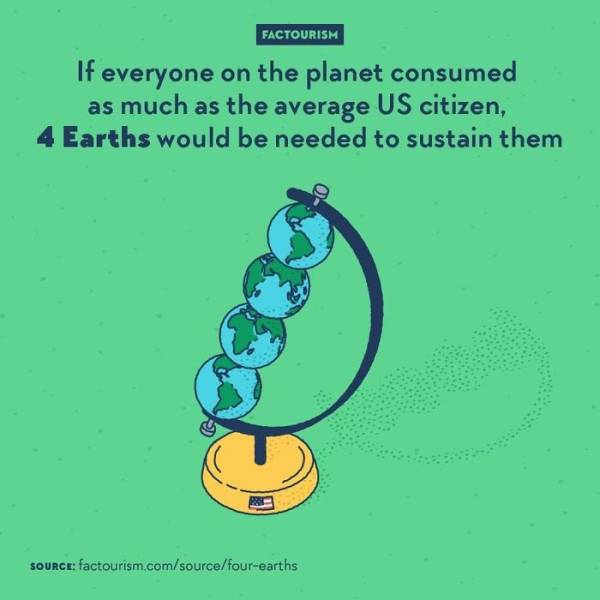
If everyone on the planet consumed as much as the average US citizen, four Earths would be needed to sustain them{Weekend Repost}A set of data produced by the Global Footprint Network measures the ecological impact of the populations of different countries. Their footprint is calculated using statistics about the natural resources used to make the products they consume, as well as their carbon emissions. The researchers calculated the amount of land and sea necessary to sustain each country. The whole world needs 1.5 Earths to be sustainable the way we consume now, and if the entire humanity were to consume the way the United States does, we would need 3.9 Earths. Yet it isn’t the worst, as it is topped by Kuwait (5.1 Earths), Australia (4.8 Earths), the United Arab Emirates (4.7 Earths), and Qatar (4.0 Earths).
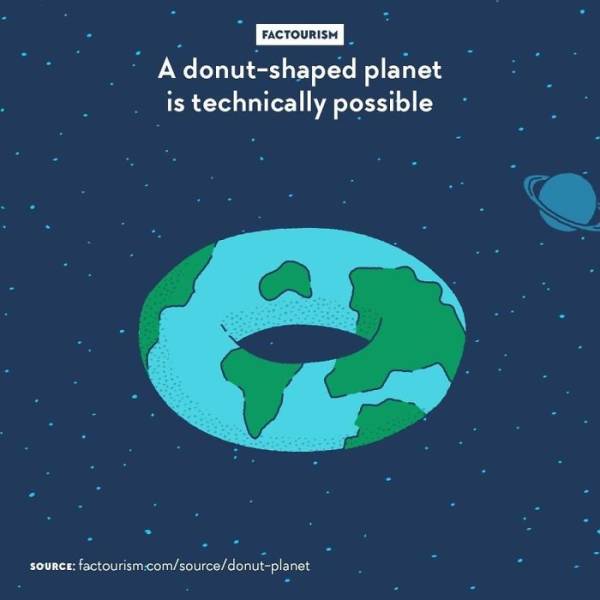
A donut-shaped planet is technically possible{Weekend Repost}Even if extremely unlikely to happen naturally, the possibility of a planet shaped as a torus — the true name of a doughnut shape — is not physically impossible. Researchers have made simulations and calculated the gravitational forces implicated, and everything seems alright. The weather would be very peculiar, and there could even be moons with orbits going through the central hole.
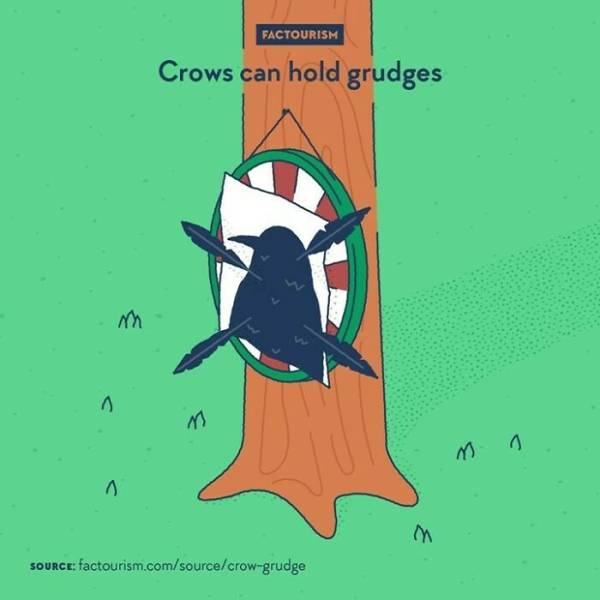
Don’t mess with a crow: they will remember your face. Researchers have been either nice or not nice to crows for scientific purposes, all while wearing different masks. Crows were able to remember which masks were not nice to them, and scans of their heads showed that a region of the brain associated with bad memories — until now only studied in mammals — was activating in the presence of a face they remembered as threatening.
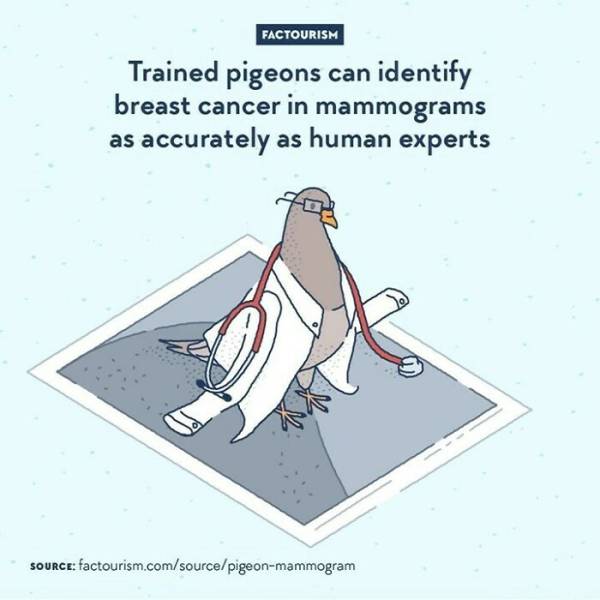
Pigeons, birds with a pretty good visual memory, were trained at classifying mammograms: some with and some without cancerous cells. If they were right, they would be rewarded with a treat. After two weeks, they were able to be 85% accurate. And when using four birds working on the same images, the accuracy of diagnosis went up to 99%. The birds’ newfound medical skills could be used to improve medical imagery data.
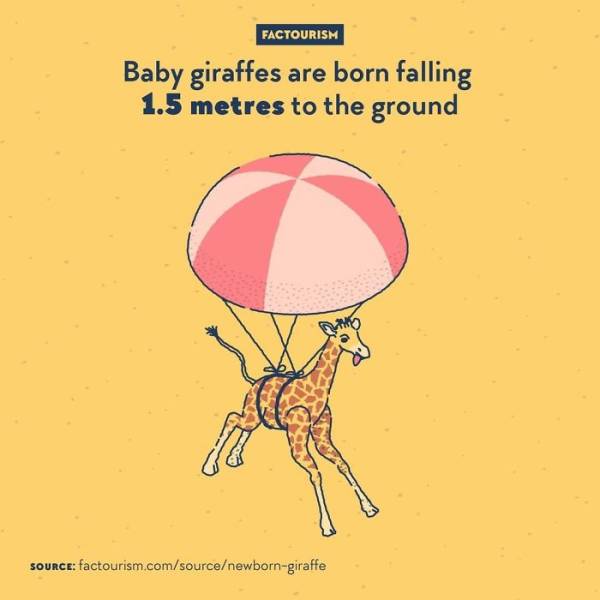
Baby giraffes are born falling 1.5 metres to the ground. It’s no secret that giraffes are very tall animals, but a lesser known fact is that they give birth standing up. The first experience of a giraffe calf is a 1.5 metres (about 5 feet) high fall. Infants are then able to stand up in the first half hour of their life, and can run within 10 hours.
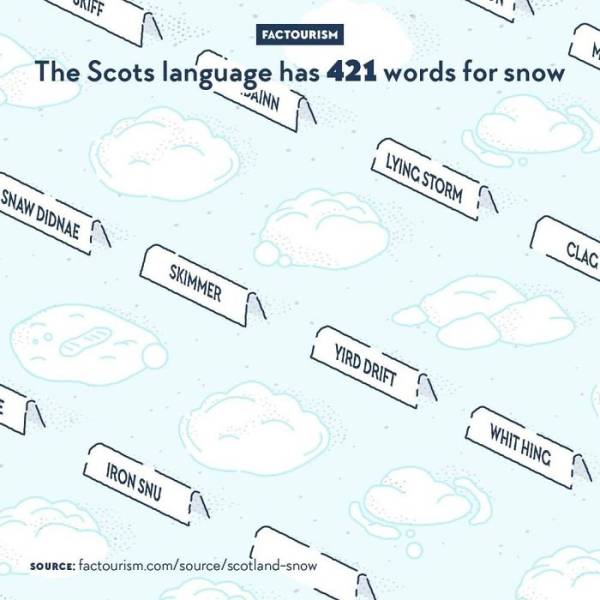
The Scots language has 421 words for snowThe Historical Thesaurus of Scots is a big dictionary of the Scots language, the native language of Lowland Scotland, in which academics have been compiling every single known word the language ever had (even though it focuses for now on vocabulary about the weather, sports and games, topics cherished by Scots). And a lot of them have to do with snow: 421 collected so far.
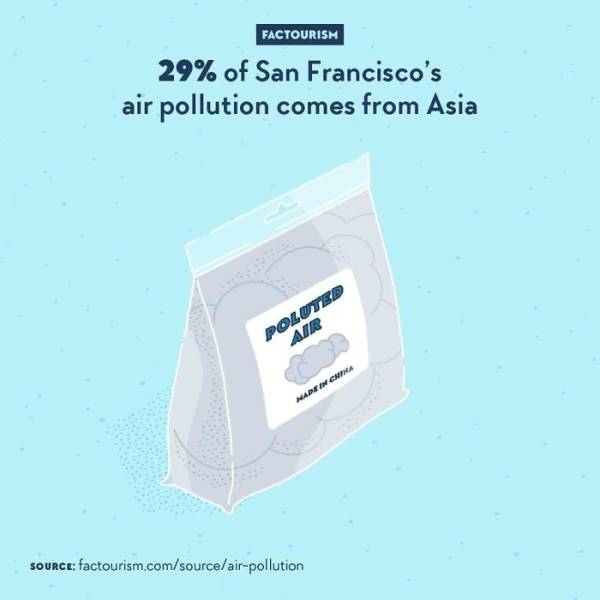
29% of San Francisco’s air pollution comes from Asia. Geochemists have analysed the air of the San Francisco Bay Area, both from an urban spot and from a coastal location, looking at pollution particles smaller than 2.5 microns over the course of six months. They have found that 29% of these were 208Pb particles, a specific form of lead that is characteristic of East Asia.
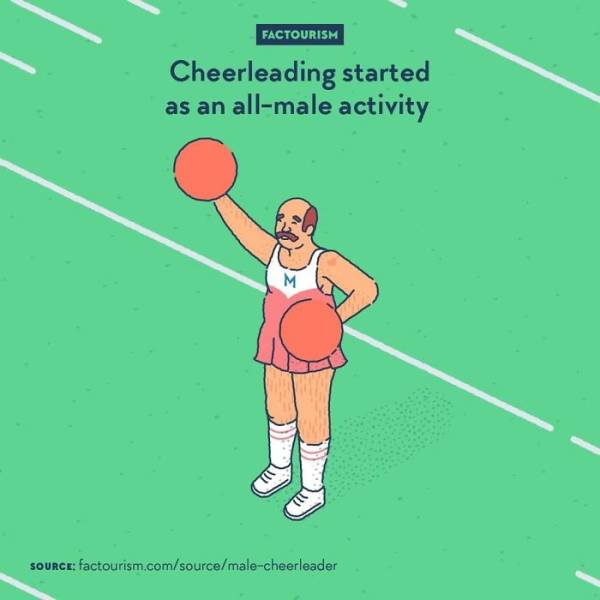
Cheerleading started as an all-male activityCheerleading in the US can be traced back to the late 19th century, when male students rebelled and, besides taking part in riots, also started practising sports in universities. One of the earliest documented examples of cheerleading dates from 1877, happening at Princeton University. It’s only in 1923 that the University of Minnesota allowed women to join, and most universities followed much later, in the 1940s. By the 1970s, most cheerleaders were women.
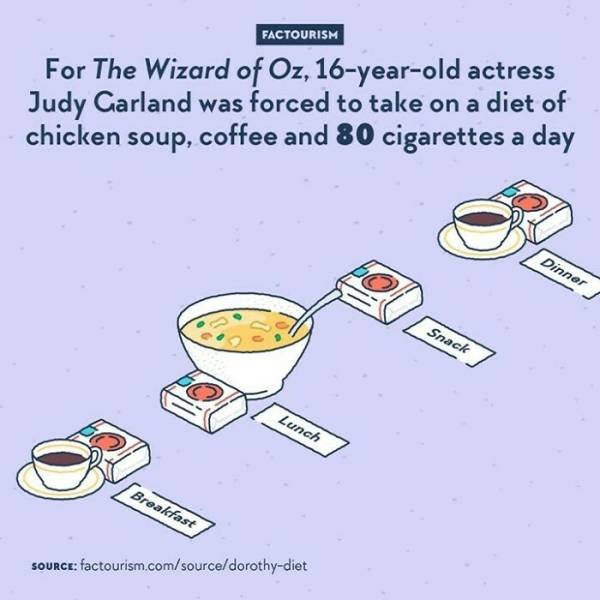
The powerful producers of the MGM film required the teenage actress to look as young and thin as possible so as to fit their whim, so they imposed on her a strict diet of some soup and coffee, along with an abundant amount of cigarettes so that would not get too hungry. On top of that, she was put on pills to reduce her appetite and to keep her awake during the long filming hours and a forced lack of sleep. Not exactly “wonderful”.
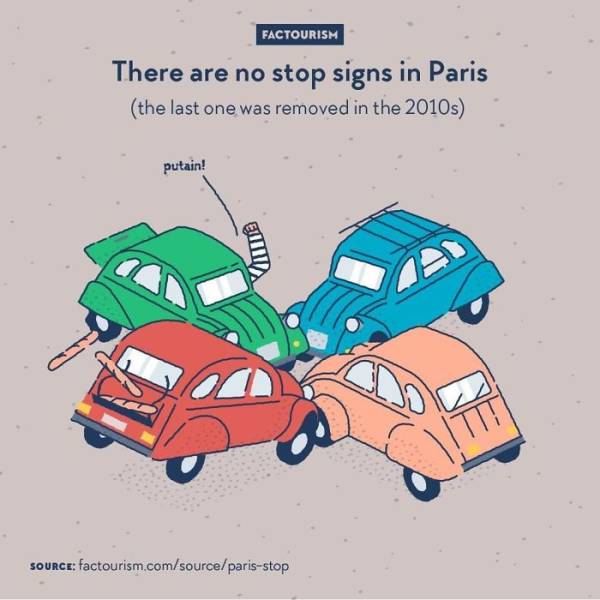
There are no stop signs in Paris(the last one was removed in the 2010s)With over 2 million inhabitants and a considerable amount of cars, the French capital has managed to do just fine without any stop signs, a sight that is usually very common in cities. At any unmarked crossing, drivers follow the “priority to the right” rule: cars coming from the right have the right of way. And of course, bigger intersections have traffic lights. It wasn’t always the case, with the last known stop sign disappearing from its street sometime between 2012 and 2014.
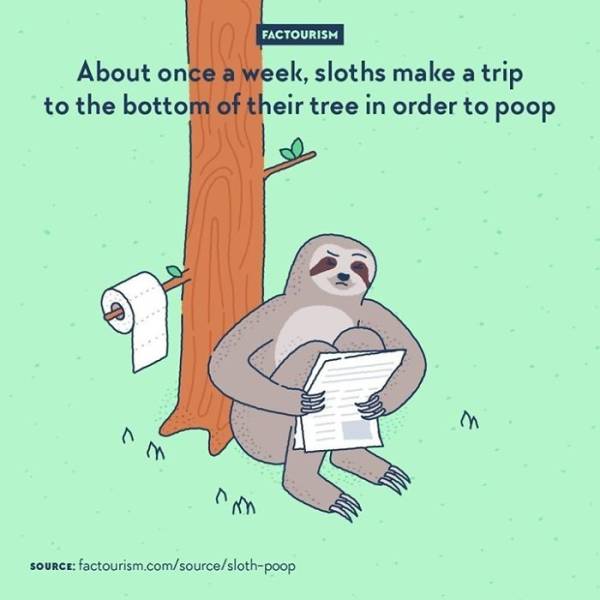
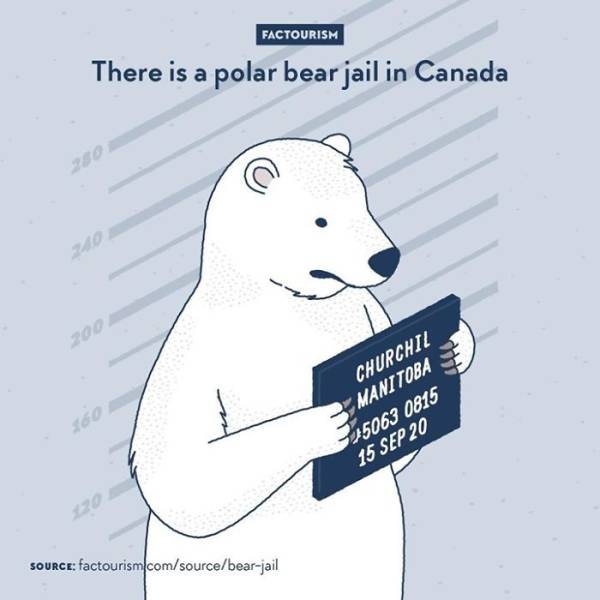
There is a polar bear jail in CanadaThe town of Churchill in northern Manitoba, visited by a thousand polar bears in the summer, has a special facility for the most troublesome or dangerous of these special visitors: nothing else than a jail, comprising about fifty cells where the bears are locked up to one month and without food. After that, they are flown far away from the town with a helicopter. The theory is that this would be memorable enough for the bear that they won’t want to approach the town ever again, even though they cannot find food anywhere else any more since the ice in the region has melted and their usual food, seals, are now not that common.

The IKEA catalogue is as widespread as the BibleWith a print run of more than 200 million copies for each edition, the IKEA catalogue is a bestseller — if it was being sold, that is. It is one of the top most printed books, along with the Bible, the Quran, and Harry Potter.
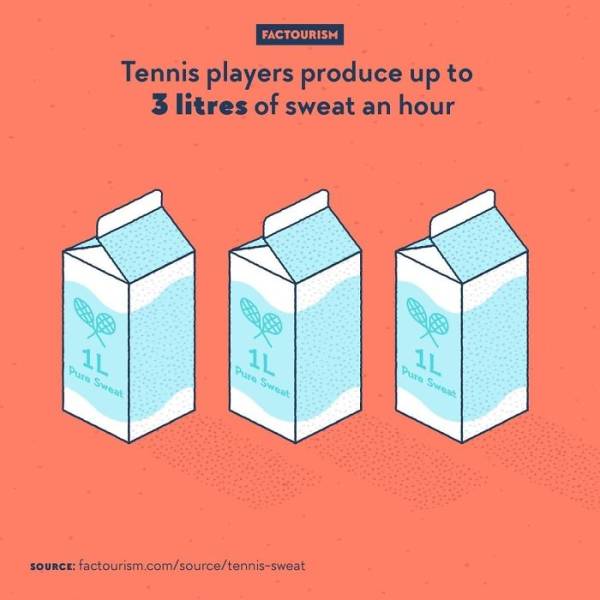
Tennis players produce up to 3 litres of sweat an hour. A tennis player can create more sweat than their body is able to replace during a 5 hours match, especially when the weather conditions are very hot. Players have to be selective about what balls to put effort into, in order to reduce their own heat and not outdo what their body can take.
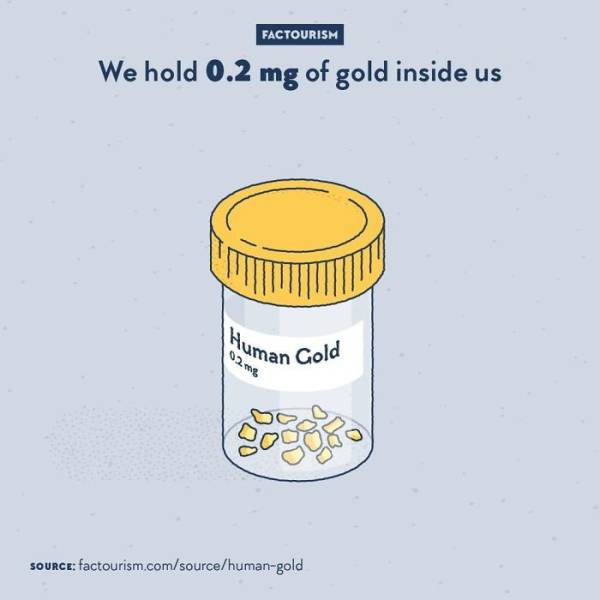
We hold 0.2 mg of gold inside us. An average person weighing 70 kilograms hosts 43 kg of oxygen, 16 kg of carbon, 7 kg of hydrogen… and 0.2 mg of gold.
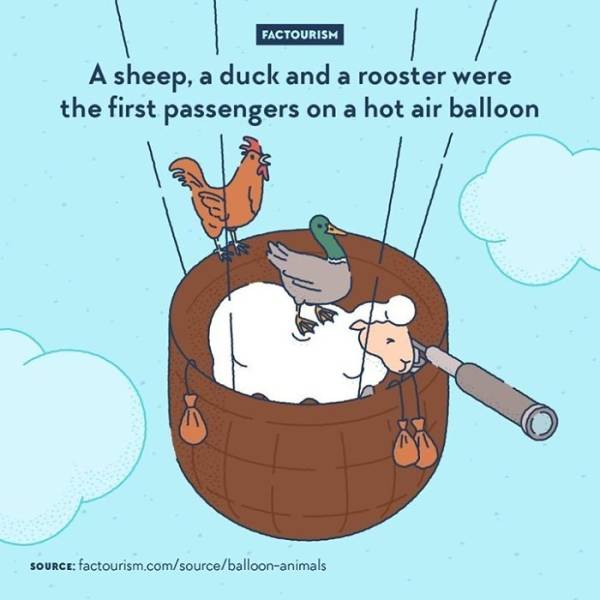
A sheep, a duck and a rooster were the first passengers on a hot air balloon1783. The Montgolfier brothers, Joseph-Michel and Jacques-Étienne, have been doing experiments with hot air balloons for about a year, when they got invited to make their first demonstration with passengers in Versailles, attended by the king Louis XVI and Marie-Antoinette. The passengers are three farm animals, chosen for their characteristics: a sheep that is not that different from a human, a bird that can fly and a bird that can’t. The balloon flew eight minutes and went 500 metres high, before landing peacefully. The animals were almost fine: the duck was not disrupted, the sheep was eating its hay like nothing happened, but had sat on the rooster, breaking its beak. They became honoured residents of the royal menagerie. A month later, the brothers flew a new balloon, this time with people in it.
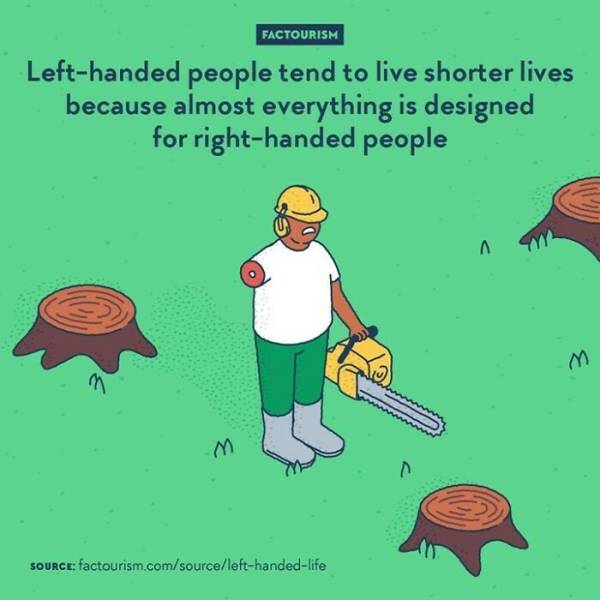
Studies have shown that life is on average shorter for left-handers. One that looked at 1,000 Californians found out that the left-handed portion died on average 9 years younger. They discovered that left-handers are also five times more likely to die in an accident.
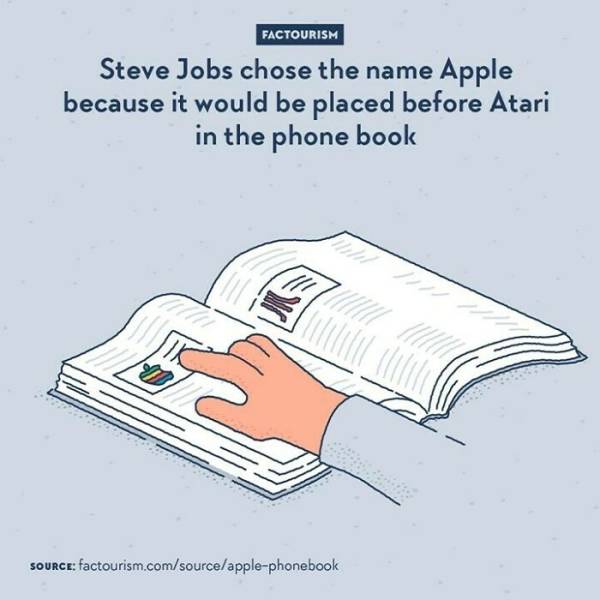
When Steve Jobs and Steve Wozniak created Apple in 1976, the first of the two Steves came up with the name Apple for two reasons: he had a nice experience working in an apple orchard a few years earlier, and the name would get them before Atari in the phone book, the company where Jobs was working previously.
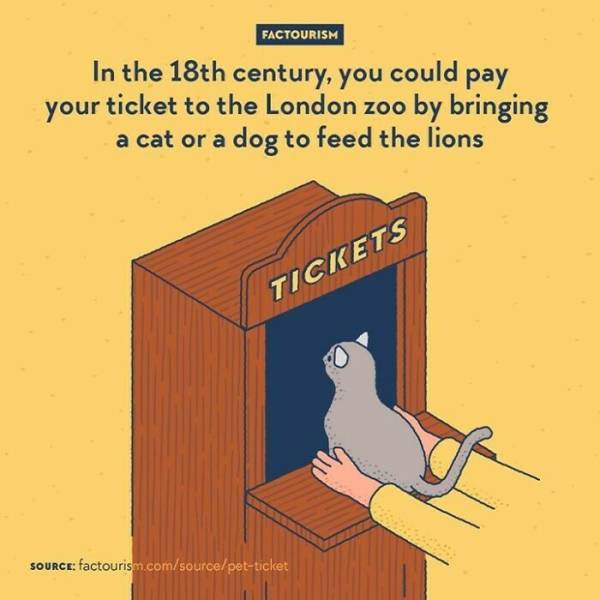
From the 1200s, the Tower of London started to host a menagerie of exotic animals, the ancestor of what would eventually move and become the London Zoo in the 1830s. The place was finally opened to the general public under Elizabeth I. The entrance was half-pence, but was free if you brought a cat or a dog.
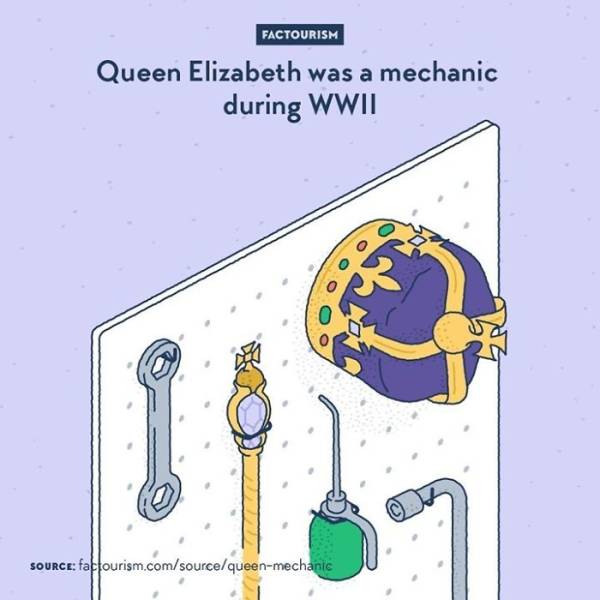
Queen Elizabeth was a mechanic during WWIIDuring the second world war, Elizabeth II, then princess, now queen of the United Kingdom, was working full-time as a mechanic and driver to help the war efforts. She was 18 in 1944 when she decided, against her father’s (King George V) initial opinion, that she would join the Auxiliary Territorial Service, a women’s branch of the British army. A photo from that time has her fixing a car engine while her mother Queen Elizabeth I is visiting.
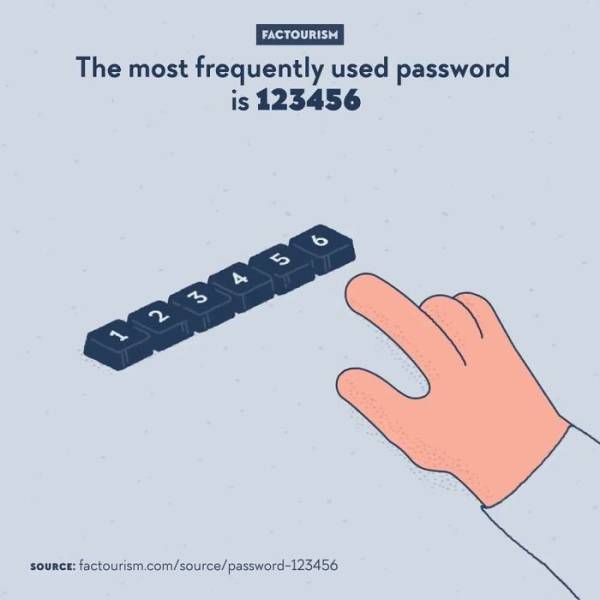
The most frequently used password is 123456{Weekend Repost}“123456” has been for several consecutive years the most widely used password, according to a list collecting all those which were hacked and leaked. The top 10 also includes the very imaginative “123456789”, “12345678”, “1234567”, and “12345”. As for the second most used password, it is “password”.
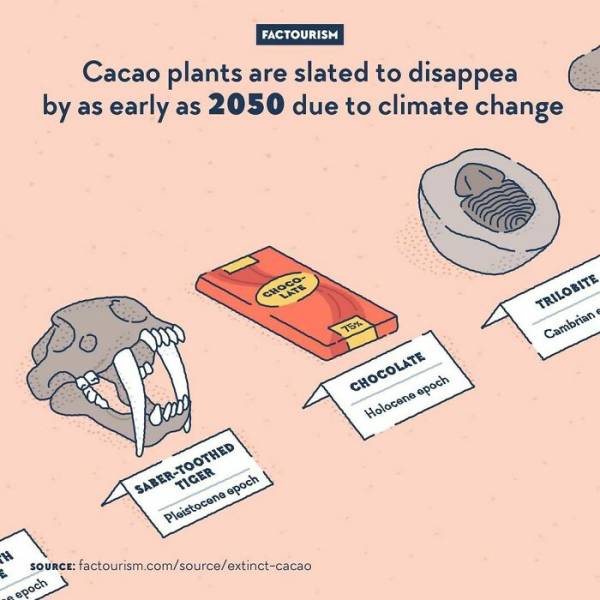
Cacao plants are cultivated in a very narrow strip on the globe: they grow only around the equator, in places that have relatively stable temperature and humidity during the year. But in the next few decades, the climate of these regions is expected to become warmer and dryer, leaving the cacao nowhere to be grown. Giant chocolate companies like Mars are working with scientists to find solutions, like making GMO cacao plants able to withstand these conditions, but we are certainly reaching the end of chocolate as we know it.
- 15shares
- 15
 Barnorama All Fun In The Barn
Barnorama All Fun In The Barn
Given the track record for accuracy on climate change predictions I suspect our chocolate sources are safe.